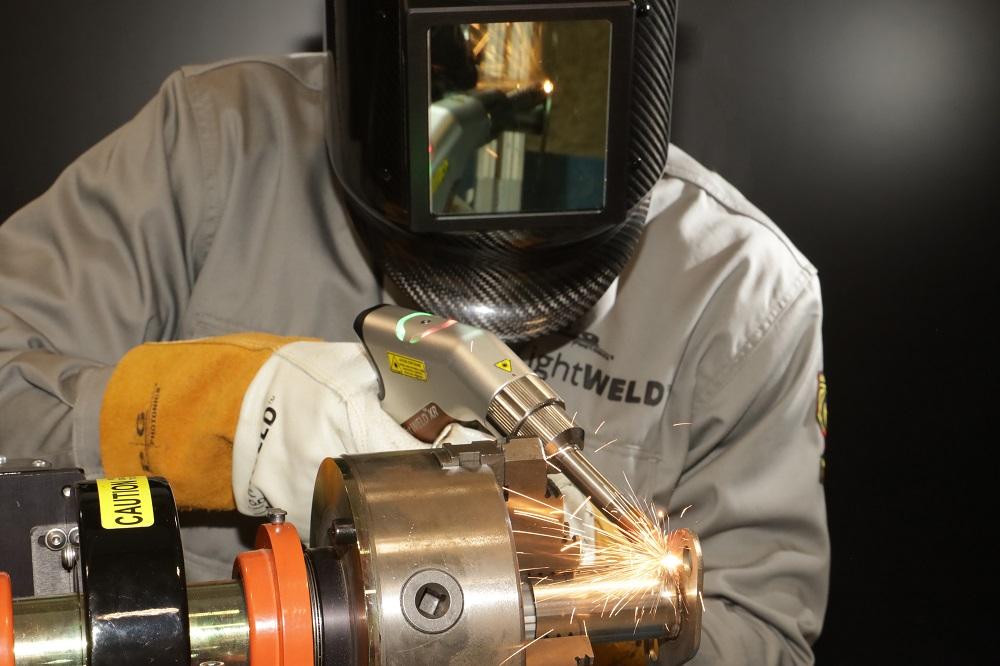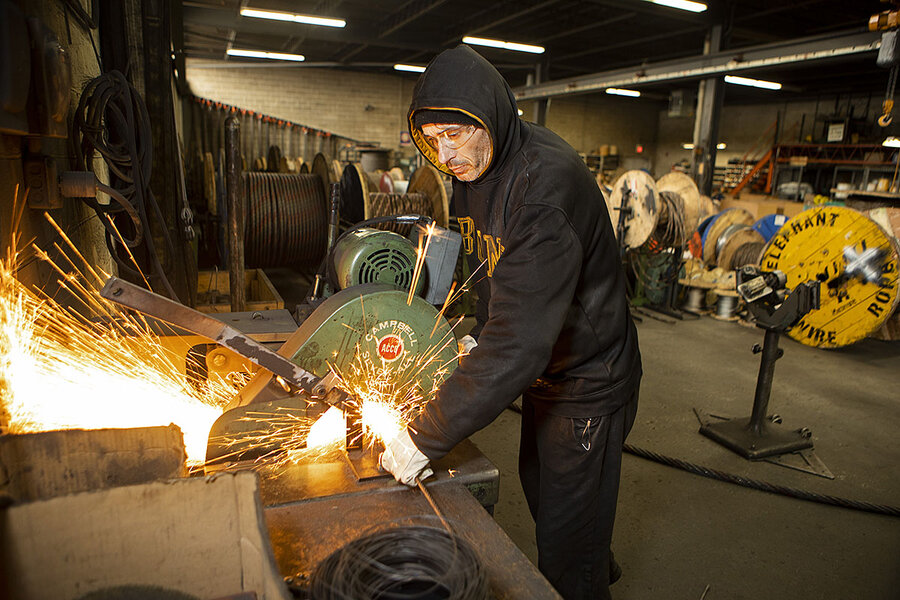Welding without a helmet exposes eyes and skin to harmful UV and IR radiation. This can lead to ‘arc eye’, burns, and long-term vision damage.
Welding is a craft that demands not only skill but also a strong emphasis on safety. The brilliant light produced during the process – a complex mix of ultraviolet (UV) and infrared (IR) radiation – poses serious risks to the unprotected eye.
Even brief exposure to arc flash can cause severe discomfort, akin to a sunburn on the cornea, known as photokeratitis. Skilled welders understand helmets are not just tools, but essential protective gear, safeguarding their eyesight and skin from UV-induced injury and burns. A helmet also protects against flying debris, a common hazard in welding tasks. Prioritizing safety through the use of a helmet is a fundamental practice in welding, ensuring craftsmen can work effectively while preserving their health and well-being.
The Importance Of Welding Helmets
Welding helmets serve as a critical shield for welders, protecting eyes and skin from intense light and heat. They offer safety from sparks, spatter, and harmful radiation. Neglecting to use a welding helmet can result in serious health risks. Understanding these dangers highlights the helmet’s vital role.
Potential Eye Damage
Welding emits intense ultraviolet and infrared rays that can harm the eyes. Even brief exposure without protection can lead to ‘welder’s flash’ or photokeratitis. This condition can cause painful inflammation and long-term damage to the eye’s cornea.
- UV and infrared rays can cause cataracts.
- Repeated exposure increases the risk of vision impairment.
Risk Of Skin Burns
Welding without a helmet exposes skin to the same harmful rays. Skin burns can occur swiftly and can be severe. Prolonged exposure can lead to skin conditions and even skin cancer. Welding helmets with proper shading protect against these dangers.
| Exposure Time | Risk Level |
|---|---|
| Immediate | Surface Burns |
| Prolonged | Deep Tissue Damage |
Inhaling Harmful Fumes
Welding produces fumes containing a mixture of metals and gases. Without proper ventilation or a helmet with a respirator, welders risk inhaling dangerous substances. This can lead to respiratory problems and chronic health issues.
- Manganese exposure may result in neurological effects.
- Stainless steel fumes can lead to lung damage and cancer.

Credit: www.safetyandhealthmagazine.com
Effects Of Welding Without A Helmet
The safety gear worn during welding, particularly helmets, is critical. They protect one’s eyes and skin. Ignoring this protection can lead to several unwelcome health issues. Understand the risks before considering welding without a helmet.
Immediate Eye Injury
Welding emits intense light and ultraviolet radiation. Without a helmet, eyes are exposed. This can cause ‘welder’s flash’ or ‘arc eye.’ Both are painful and can result in temporary blindness. Symptoms might not appear until hours later, which include:
- Severe pain in the eyes
- Watery eyes
- Blurred vision
Long-term Eye Damage
Extended exposure to UV radiation can lead to long-term eye damage. Such exposure increases the risk of cataracts, which cloud the lens of the eye. It can cause permanent vision loss if untreated. Repeated exposure without protection also leads to other chronic eye conditions.
Skin Burns And Uv Exposure
Similar to sunlight, welding arcs emit UV rays that can burn unprotected skin. Welding without a helmet increases the risk of painful skin burns. These burns are not just superficial. They can also lead to certain skin conditions, including cancer. Coverage is vital to protect all exposed skin.
| UV Radiation Effects | Immediate | Long-term |
|---|---|---|
| Eyes | Arc eye, pain | Cataracts, vision loss |
| Skin | Redness, burns | Premature aging, cancer |
Exposure To Harmful Fumes
Welding without a helmet isn’t just risky for your eyes. It exposes you to dangerous fumes. These fumes come from melting metal and coatings. They can be very harmful.
Inhalation Of Toxic Gases
As metals heat up, they release gases. Some common toxic gases from welding include:
- Manganese: Can affect your brain.
- Lead: Causes organ damage.
- Aluminum: Affects your nerves.
Without a helmet, these gases can enter your lungs easily. Helmets limit this risk.
Potential Health Risks
Long-term exposure to welding fumes can lead to serious health problems:
- Lung issues and cancer
- Heart disease risk goes up
- Brain health can worsen
Using a helmet with the right filter keeps you safer. It helps stop toxic fumes from entering your breathing zone.

Credit: www.thefabricator.com
Regulations And Safety Standards
Welding without a helmet poses serious risks. Strict rules ensure welder safety. Different countries set these rules. All rules aim at protecting welders from harm. The rules are clear: always wear a helmet when welding.
Osha Welding Safety Standards
The Occupational Safety and Health Administration (OSHA) sets safety standards. These standards aim to prevent welding injuries. OSHA requires proper eye and face protection. This rule applies to all welders in the workplace. Not following this can lead to penalties.
Key OSHA standards include:
- Personal Protective Equipment: Helmets with filter lenses are required.
- Training: Welders must learn about potential hazards.
- Workplace assessment: Employers must identify risks.
Legal Requirements For Helmet Use
Legal requirements vary by location. Many countries legally enforce the use of welding helmets. Failure to comply can result in fines. Some regions may have stricter laws. Always check the local laws before starting to weld.
| Country | Helmets Mandatory | Penalty for Non-Compliance |
|---|---|---|
| United States | Yes | Fines up to $13,653 per violation |
| Canada | Yes | Varies by province |
| United Kingdom | Yes | Up to £20,000 or imprisonment |
Remember, safety is everyone’s responsibility. Make helmet use a habit.
Prevention And Risk Mitigation
Welding without proper safety measures harms your health. It’s essential to understand that preventing risks before starting any welding project is crucial. By selecting the right helmet, practicing proper ventilation, and wearing appropriate gear, you can ensure a safe welding experience.
Proper Helmet Selection
Choosing the right helmet is key to safe welding. A good helmet shields your face and eyes from sparks and harmful radiation. Here’s what to look for:
- Auto-darkening filters that adjust to the light.
- Adjustable shades for different welding processes.
- Comfortable fit to wear for long hours.
Ensure the helmet meets industry standards like ANSI Z87.1.
Ventilation And Protective Gear
Besides a helmet, ventilation and protective gear are important. They keep harmful fumes away and prevent burns.
| Gear | Purpose | Examples |
|---|---|---|
| Respirators | Filter out toxic fumes | Half-mask, full-face varieties |
| Gloves | Protect hands from heat | Leather welding gloves |
| Aprons | Shield body from sparks | Leather or flame-resistant material |
Install exhaust systems for effective airflow. Wear flame-resistant clothing to prevent burns. These steps are your line of defense against potential risks.

Credit: www.csmonitor.com
Training And Education
Stepping into the world of welding calls for more than just skillful hands. It requires a deep understanding and respect for the safety protocols that protect professionals from harm. The cornerstone of welding safety lies in comprehensive training and education, which ensures that every welder recognizes the grave risks of operating without proper protective gear, like welding helmets.
Importance Of Proper Training
Proper training in welding is critical for several reasons. It goes beyond mastering the craft; it’s about ingraining safety as second nature in every welder.
- Knowledge of Risks: Understand the severe risks such as eye injuries, skin burns, and long-term vision damage that can result from unprotected welding.
- Use of Equipment: Learn the correct use of helmets, gloves, and other protective gear vital for safety.
- Skill Development: Develop the essential skills while being aware of the safety protocols.
Welding Safety Workshops
Attending welding safety workshops is a practical step towards ensuring a safe environment for welders.
| Workshop Focus Areas | Benefits |
|---|---|
| Personal Protective Equipment (PPE) Usage | Increases PPE usage compliance, reduces accidents |
| Hazard Recognition and Control | Helps identify potential risks before accidents occur |
| Health and Safety Regulations | Ensures welders follow legal safety standards |
These workshops also offer hands-on experience with the latest welding technologies, under the guidance of experienced professionals. Ensuring safety becomes inherent to the welding process itself.
Frequently Asked Questions On What Happens When You Weld Without A Helmet
Can Welding Without A Helmet Cause Eye Damage?
Welding without a helmet can lead to a painful condition called ‘welder’s flash’ or ‘arc eye,’ which is damage to the cornea from UV radiation. Long-term exposure also increases the risk of cataracts and other eye disorders.
What Are The Risks Of Unprotected Welding?
Unprotected welding exposes you to intense UV and infrared radiation, leading to burns, eye injuries, and long-term health problems. It may cause skin damage akin to severe sunburn and increase the risk of skin cancer.
How Does Uv Radiation Affect Welders?
UV radiation can penetrate the skin and eyes, causing burns and cellular damage. For welders, repeated exposure without protection increases the risk of skin cancer and sight-threatening conditions like cataracts.
Is It Legal To Weld Without Proper Ppe?
No, OSHA regulations require the use of proper Personal Protective Equipment (PPE), including a helmet, when welding to protect from hazards. Failure to comply can result in legal repercussions and health risks.
Conclusion
Welding without adequate protection poses serious risks. It can lead to irreversible eye damage and compromised skin health. Always prioritize safety and use a helmet. Protecting your well-being ensures you’re able to continue working on projects you love, safely and effectively.
Remember, safety is not just a protocol, but a necessity.